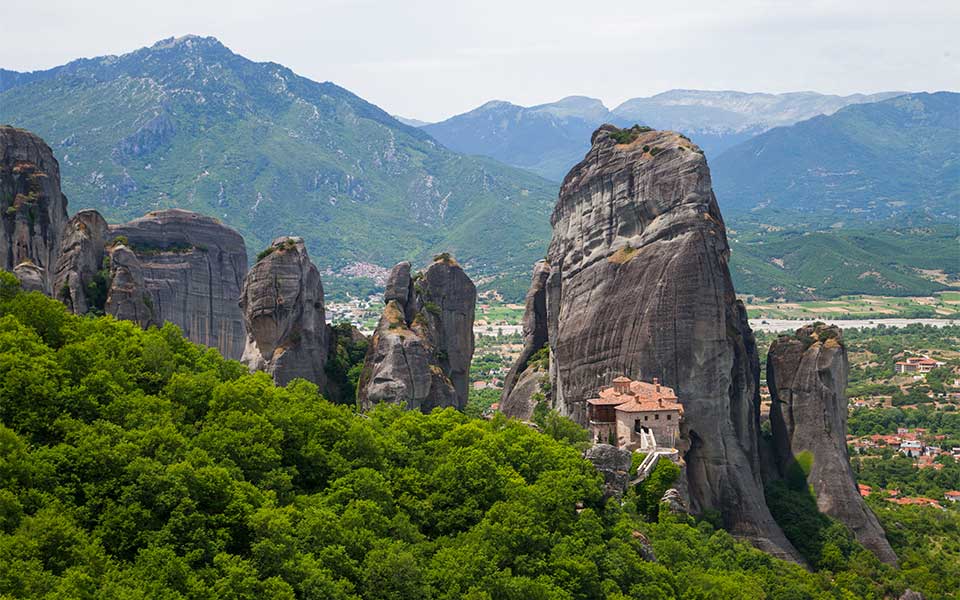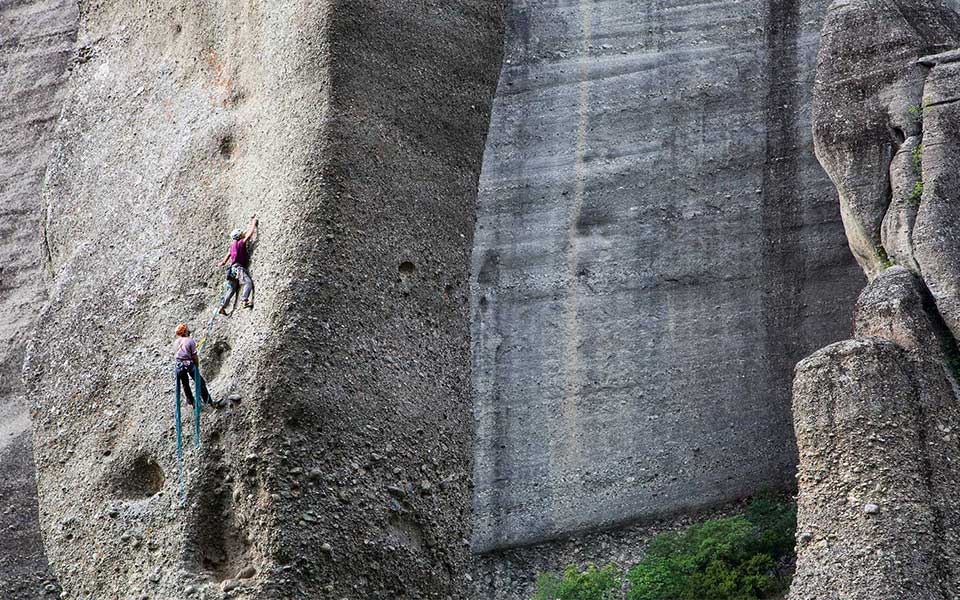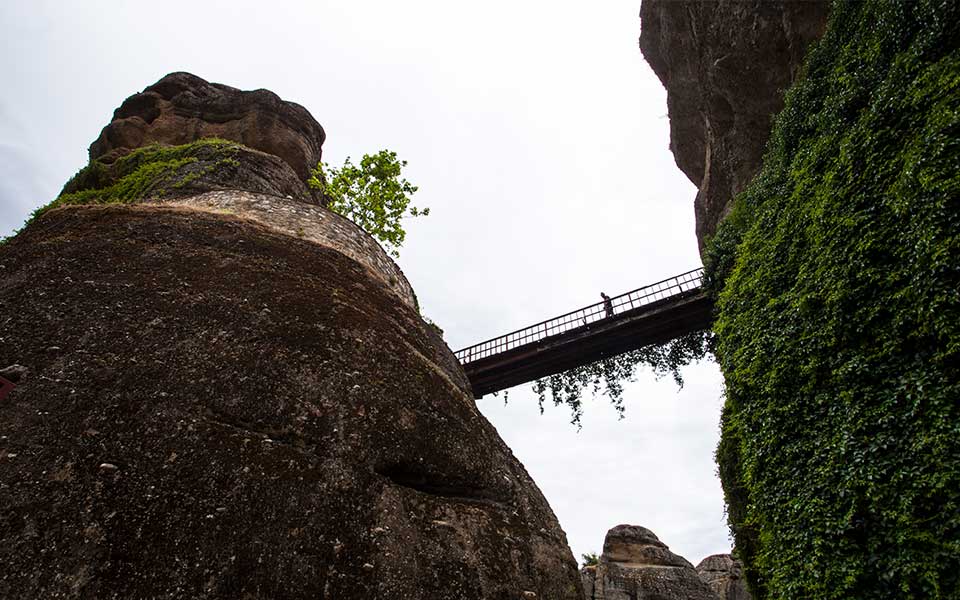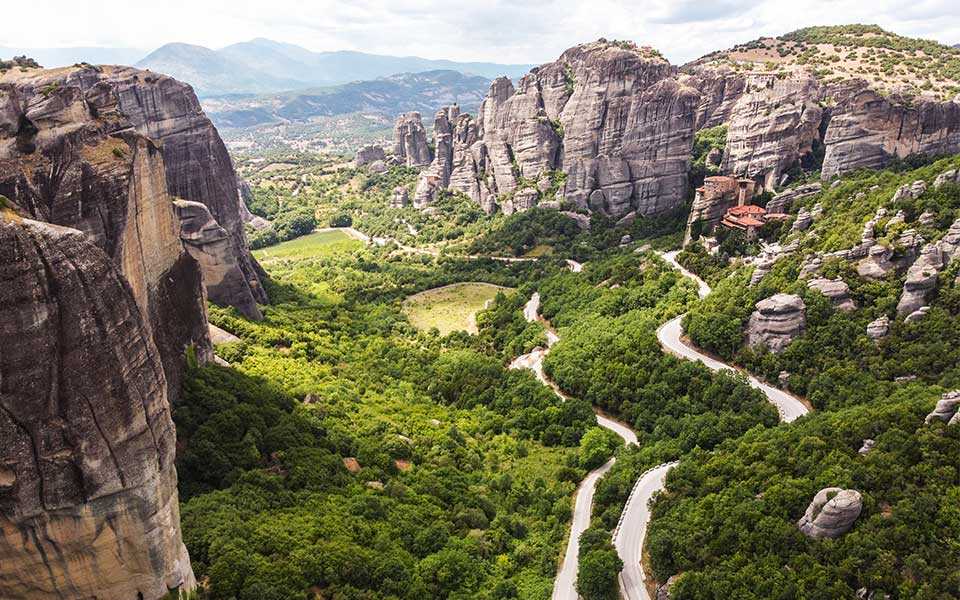Meteora is a UNESCO World Heritage Site that everyone should visit at least once in their lifetime, especially during Easter. With its 170 massive rock pillars rising eerily above the Thessalian plain, its six beautiful monasteries that form Greece’s second largest monastic community, after that of Mount Athos, and its countless hermitages nestled in caves, Meteora has a rich history that dates back to the hermits who first climbed the rocks and occupied the caverns in the eleventh century.

© Olga Charami
1. The solemn atmosphere of the monasteries
Meteora’s reverent atmosphere is undeniable, which is why it is such a popular religious tourism destination. While it is possible to visit the six still-functioning monasteries (Megalo Meteoron, Varlaam, Aghios Stefanos, Rousanou, Aghia Triada, and Anapafsas) to learn about monastic life and the priceless artefacts they house, attending the Easter services there is a singular experience, as the breathtaking scenery and austere simplicity of monastic life amplify the sense of devout concentration they instill. While the epitaph processions and Easter vigils are more popular at Meteora’s two largest monasteries (Megalo Meteoro and Varlaam), the sparse crowds in the other monasteries add to the experience. On Maundy Thursday, don’t miss the Last Supper and Holy Passion Services at the Monastery of Varlaam.
2. Biking in Meteora
Biking is gaining popularity in the Meteora region, and it’s an excellent way for visitors to explore the area. Rent an e-bike and take a morning ride to the monasteries; visit locations that offer breathtaking views of the region’s picturesque landscape and a chance to witness the brilliant colors of the sky as the sun sets in the evening; or rent an e-mountain bike and follow the winding trails between the rocks to the hermitages, abandoned monasteries, and local wineries. Multi-day tours in the rest of Thessaly are also available for those who are interested. (meteoraebike.com)

© Olga Charami
3. Mountain climbing and hiking
Before the hot days of summer arrive and Meteora no longer lends itself to outdoor activities, you can go mountain climbing or hiking, both of which are great ways to explore the area. There are an estimated 870 climbing routes, the majority of which are reserved for experienced climbers due to the danger they pose. Climbing guidebooks by author and climbing instructor Vangelis Batsios, as well as any other information you may require, can be found at Paradeisos taverna in Kastraki (Tel. (+30) 24320.227.23), a popular hangout for climbers.
For those who enjoy hiking, a good map is all you need. The old trails that once linked the monasteries and hermitages are still visible in the narrow passes between the rocks and the region’s lush vegetation. Two easy and beautiful routes are the one that begins in Kastraki and ends at the Holy Spirit rock, and the one that passes through the plateau between the Pixari, Bantova, and Abaria rocks before arriving at the Monastery of Aghios Nikolaos of Bantova. A longer trail leads from the Monastery of Anapafsas to the Monastery of Megalo Meteoro.

© Olga Charami
4. Foraging for truffles
The Natural History Museum of Meteora and Mushroom Museum organizes special truffle hunts. This year’s Easter hunts are scheduled for May 4 and May 6. Specially trained truffle dogs are used to search for truffles, and the hunt is followed by a mushroom tasting session and an outdoor preparation of truffle pasta. The museum also provides guided tours of its interesting exhibits and collections.
5. Aghios Georgios of Mantilas
On the feast of Aghios Georgios, on Easter Monday, locals and visitors gather under the Stylos rock, just outside the village of Kastraki, where the hermitage of Aghios Georgios is located. Local climbers scale the rock to leave handkerchiefs as offerings from the faithful and remove last year’s offerings, which they then distribute to the crowd, who keep them as charms; a spectacular tradition to say the least.












